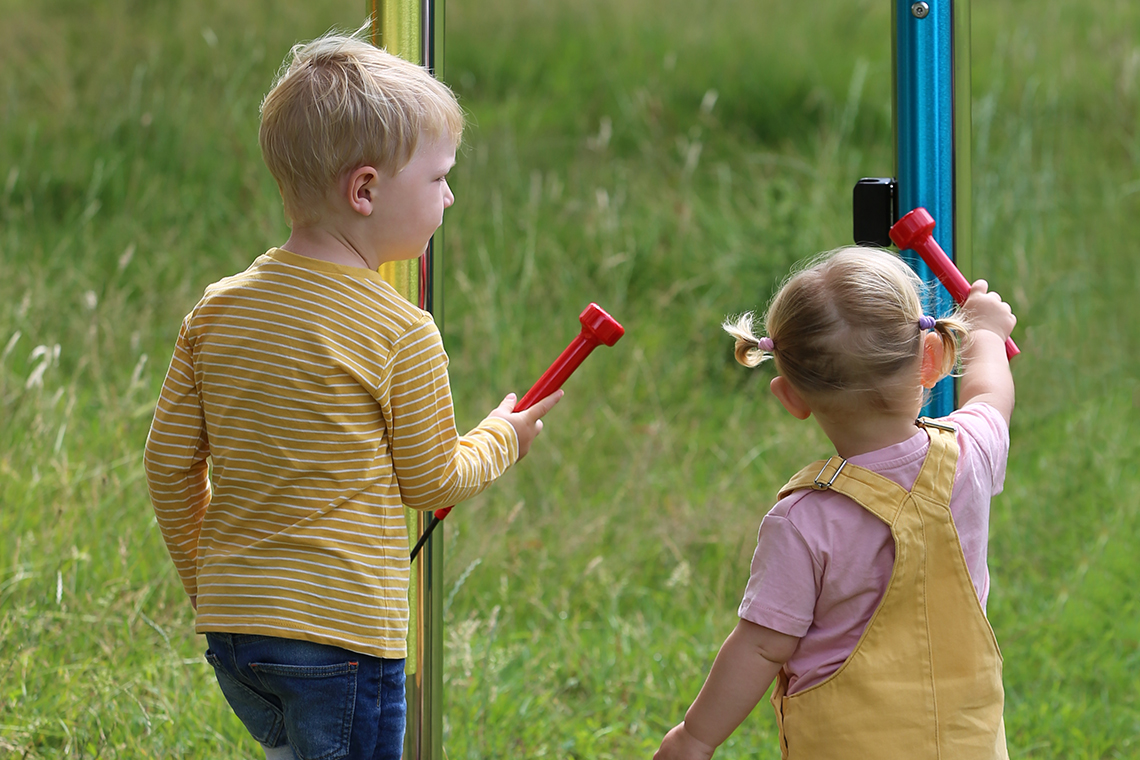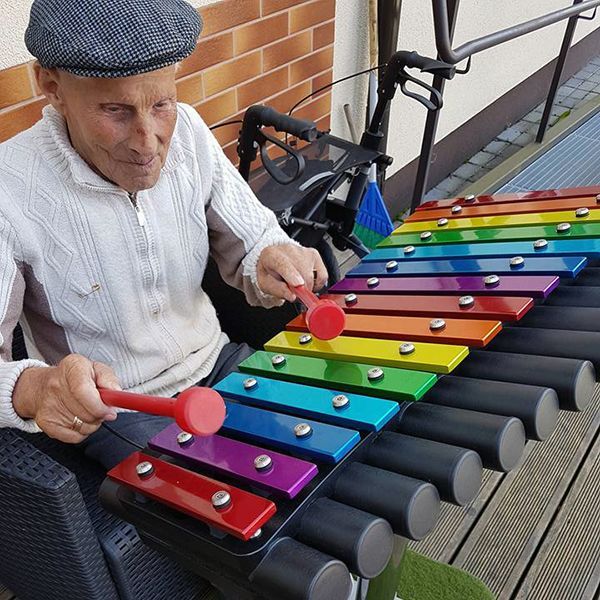Using Outdoor Musical Instruments to Improve Core Stability
With a lot of focus on children being academically ready for school, many parents and childcare providers are considering going back to basics and helping a child be physically ready at the start of the new school year.
Building core stability is like building a strong foundation for a child; just as a tree needs a strong trunk to be able to hold its branches up and withstand elements in its environment, a child requires a strong core to participate in life’s daily activities efficiently. Developing the physical skills of balance and core strength will have endless benefits, making them more coordinated individuals and enhancing their endurance and ability to sit and engage in learning for longer periods.
Perhaps you’ve encountered a ‘W sitter,’ a child who is constantly in that knees-and-bottom, wide-based position. While the child feels stable, this position does not permit trunk rotation and lateral weight shifts, a skill needed for running, manipulating objects, and negotiating space. How about the child who is always flopped over to one side or is constantly adjusting their position during carpet time? All these clues indicate a lack of core strength and may prevent a child from developing more mature movement patterns necessary for higher-level skills.
Essentially, core strength, or postural control, is the anchor and launching pad for everything we do. Unfortunately, there is a definite rise in both less active children and those with developmental delays, both of which contribute to weaker core muscles. The body’s core refers to the muscles surrounding the abdomen, pelvis, and back, and the core muscles work to align the pelvis vertically, keep the spine erect, and balance the head on the torso. When the arms are lifted forward, the neck and trunk muscles are quickly recruited to keep the head and trunk steady.
Core Strengthening with Music and Movement
There are numerous fun and efficient ways to promote core strength, including music and movement! Children love to wiggle and move to songs and rhymes with actions that will address core body strength. Songs such as 'I’m a Little Teapot,' 'Head, Shoulders, Knees, and Toes,' 'Row, Row, Row Your Boat,' 'If You’re Happy and You Know It,' 'Hokey Cokey,' and 'The Wheels on the Bus' to name just a few.
Music and movement support early years children with physical activities that build both body and brain strength, crossing midlines, and vestibular stimulation. Outdoor musical instruments can be unusual yet fun and useful tools to aid the development of physical skills. They are also proven to support communication, encourage expression, and build self-esteem.
When standing to play large outdoor musical instruments such as an Akadinda or Marimba, reaching up and across to play the full range of notes engages gross motor skills and bilateral movements. Bilateral coordination activities are essential for coordinated and fluid movements that require both sides of the body. This fun activity will help develop the child’s core strength, allowing them to feel more stable in an alternative seated position. Research also indicates a significant association between academic performance and body coordination.
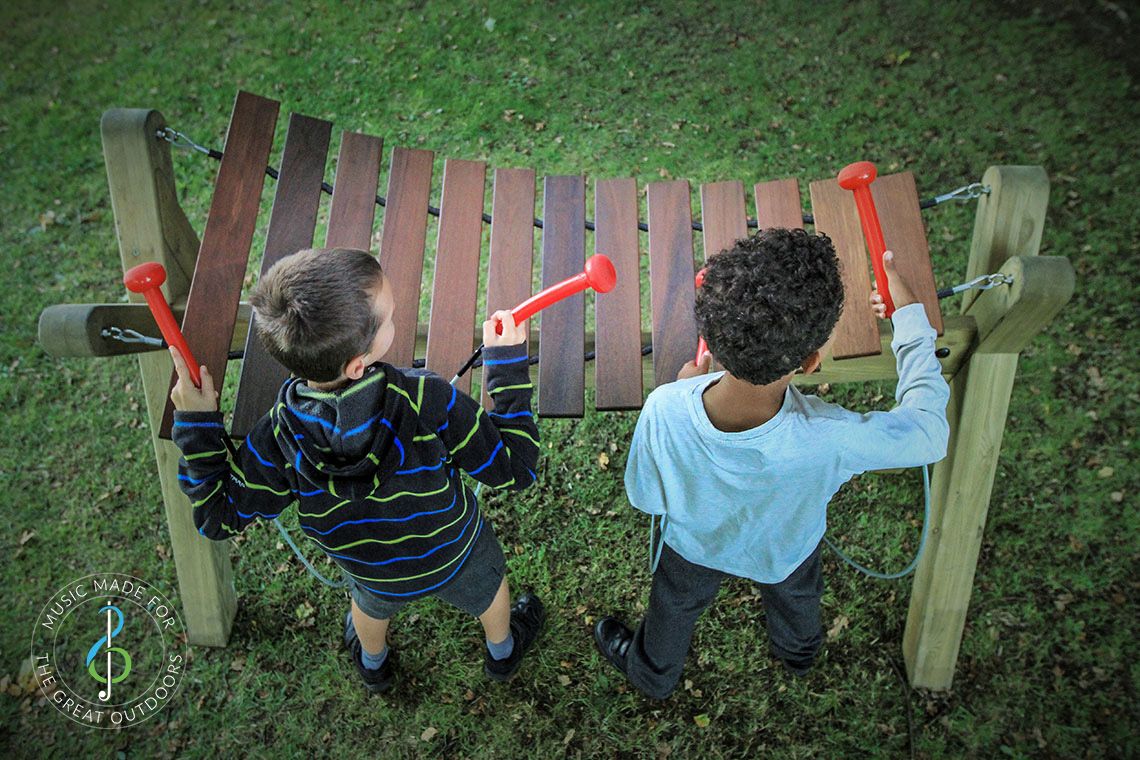
Crossing the Midline
Activities that encourage crossing the midline can aid in a child’s physical development. Imagine an invisible line drawn down the center of your body. Now imagine drawing a long horizontal line on a piece of paper. Can you complete this task, crossing that imaginary vertical line with your dominant hand without passing the pencil into the other hand? What seems like a simple task can be tricky for those who are not used to crossing the midline—those children you may have observed reaching for items on the right side of their body with their right hand and the left with the left. Perhaps they constantly swap hands while mark-making. This difficulty crossing that imaginary line can slow the development of a dominant hand. Many other everyday tasks are dependent on crossing the midline, so this is an important skill to master.
The right side of our brain controls the muscles on the left side of our bodies, and the left side controls the muscles on the right side. When we cross our midline with our arms or legs, we boost communication between the two hemispheres of our brains. For children to become confident with movements that cross the midline, we need to encourage the brain's two hemispheres to work together.
Playing a large musical instrument such as Xylophones or large sets of chimes such as Alto Diatonic Freechimes will encourage the child to reach, move their arms across their body, or play from one side of the body to the other—promoting communication between those two sides of the brain. With time, the child will spontaneously do this, and the need to swap hands will decrease.
Other activities that encourage crossing the midline include:
- Wiping the table
- Pushing cars along a track
- Painting a large space, like a fence or wall, using water and adult-size paintbrushes
With each of these activities, the child should be encouraged to use one hand at a time.
What about that child who struggles to grip their pencil or pull up the zip on their coat? The gross motor skills used to manipulate the large mallets of an outdoor musical instrument can improve muscle tone and encourage a preference for a dominant hand. These large movements can then be gradually reduced to the fine motor skills required inside the classroom.
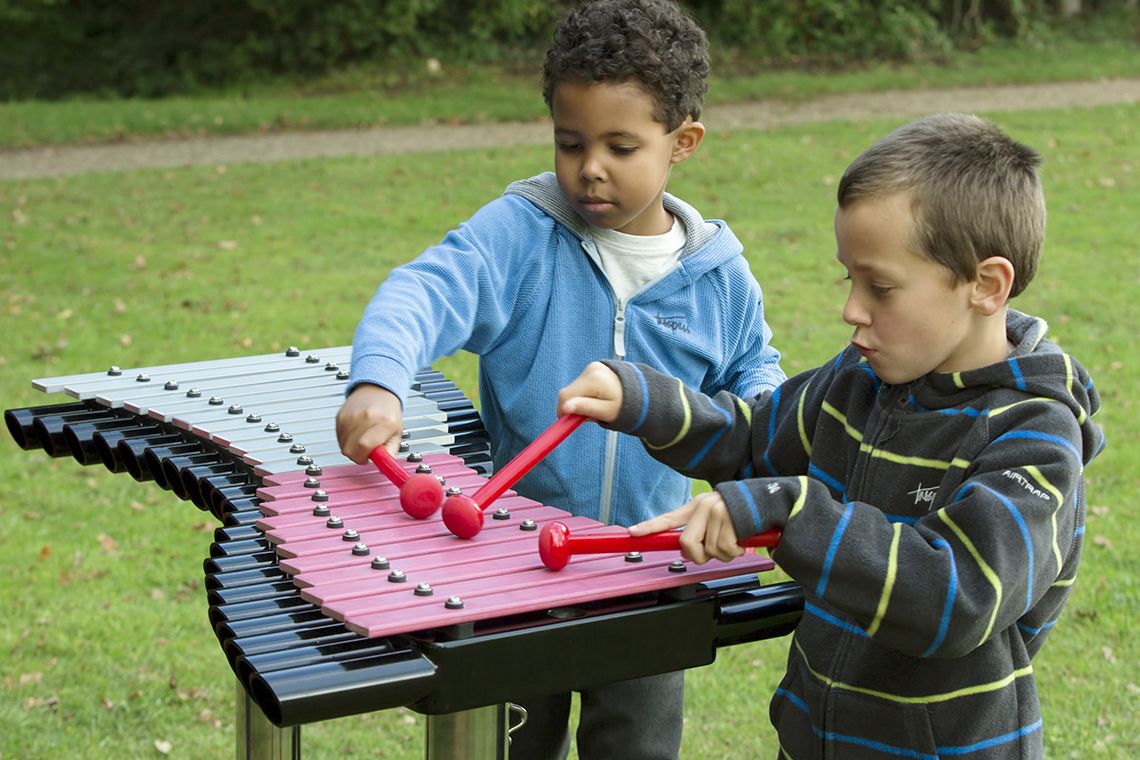
Drumming Up Brain Activity
Drums such as Congas or Tumbadoras and Rainbow Sambas are another excellent musical tool for encouraging movements that cross the midline of the body. Hand drumming sparks brain function and provides a wide variety of possibilities for enhancing hand-eye coordination and brain neuroplasticity. Encouraging children to try and play the two drums by alternating and using the right hand to play the drum on the left side of the body and the left hand to play the drum on the right side of the body, to a rhythm or in time with the music, will create a ‘crossing the midline experience’ while integrating auditory, visual, and proprioceptive sensory information.
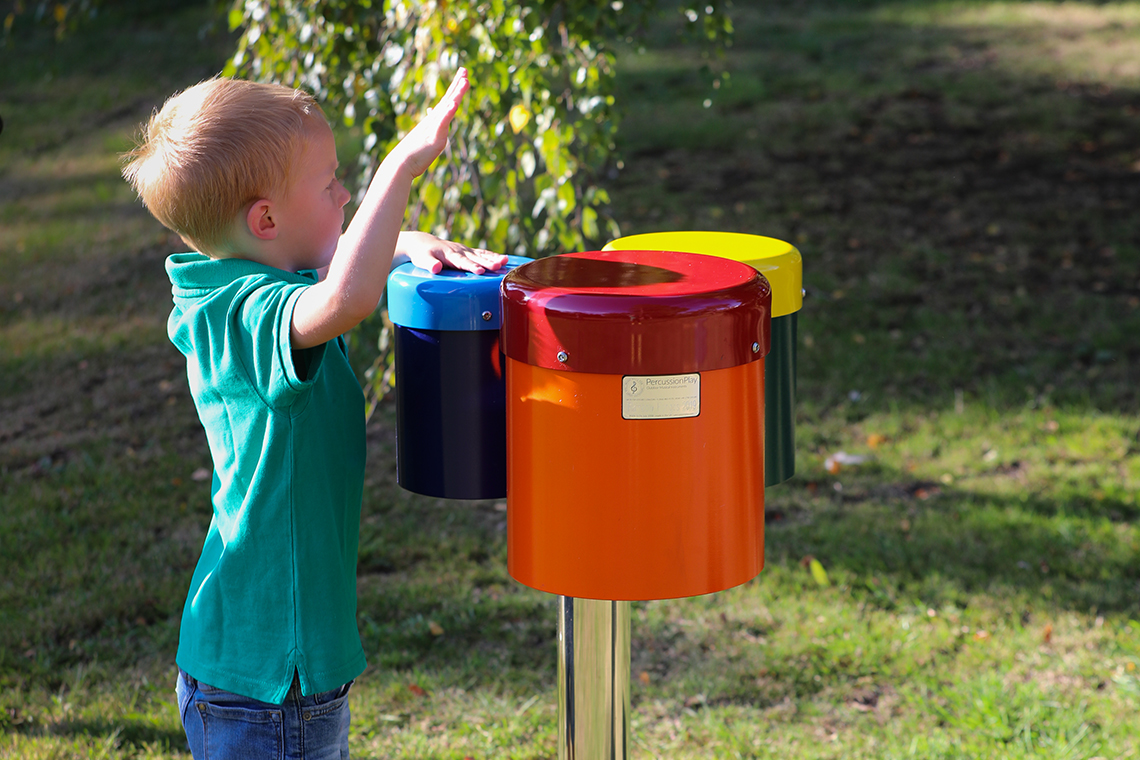
Outdoor musical play strengthens and builds a child’s body awareness. It engages the vestibular system (responsible for balance and spatial awareness) and increases the child’s confidence in movement. Large-scale movements such as those required to play the instruments help to improve a child’s proprioception—the ability to sense their body's orientation and its relation to objects in their environment.
Giving children access to outdoor musical instruments and environments that support musical freedom, interaction, and development—as well as the time to enjoy them—will aid their physical and mental well-being during their most rapid developmental period. Having instruments resistant to weather means that they can be left in the play space year-round, enhancing continuous provision and allowing children to develop their skills in their independent learning time.
Outdoor music lends itself to endless openings for learning through play. As well as designing and manufacturing outdoor musical instruments, Percussion Play has compiled an online knowledge base which hosts articles detailing the varied benefits of musical and outdoor play and White Papers on various music, play and health-related topics.
